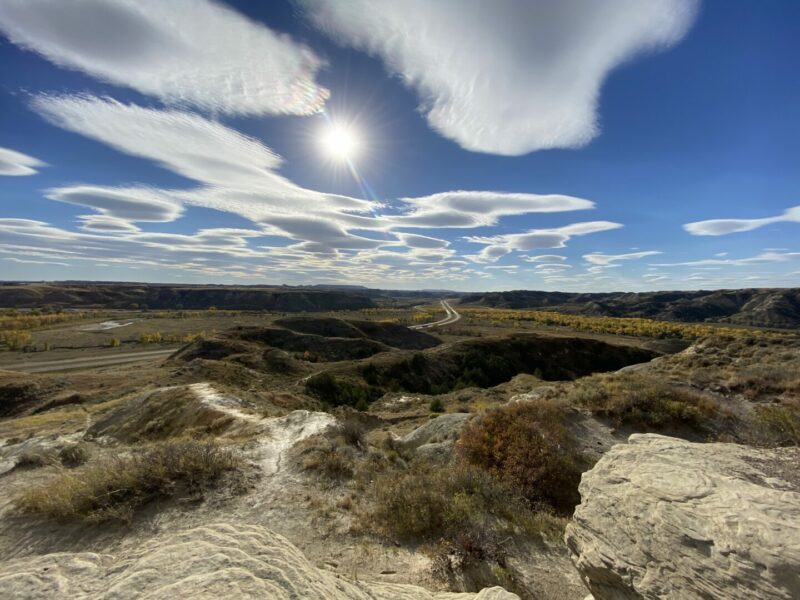Table of Contents Show
When driving along Interstate 94 from Minnesota to Montana, you may wonder when the miles of grasslands end.
But don’t fret, once you hit central North Dakota, you’ll find endless National and State Park sites to explore. With so much to do in this part of North Dakota, you don’t want to waste your time when visiting.
Stick to the best North Dakota National Parks and State Parks and plan accordingly, so you don’t waste valuable time in the Peace Garden State.
Let’s learn more about why your itinerary will be complete for days!
When Is the Best Time to Visit North Dakota?
It’s best to avoid the Dakotas in the winter. Harsh, snowy, frigid conditions make traveling to this part of the country almost unbearable.
Consider visiting around Memorial Day through Labor Day for the best weather.
To avoid the peak season crowds, try to arrive in early May or late September. You’ll often find places closed for the winter, so to get the most out of your visit, stick to the prime tourist season.
Pro Tip: If you hate crowds, here are 5 RV Destinations That You Should Seriously Consider Visiting in the Off-Season!
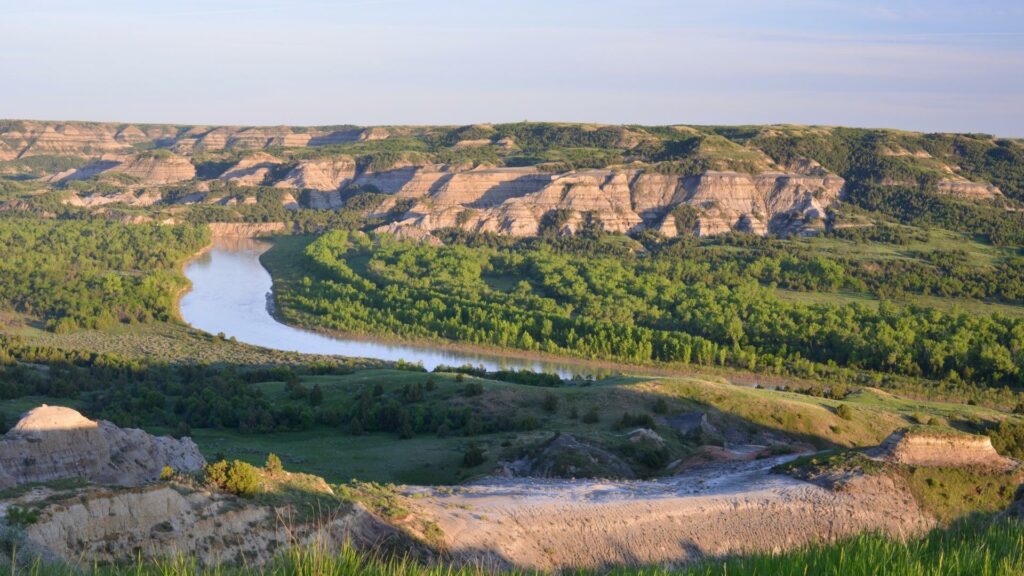
How Many National Parks Are in North Dakota?
Theodore Roosevelt National Park is the only location with the National Park designation. It’s stretched across the western part of South Dakota and is easily accessible from Interstate 94.
However, the National Park Service manages three other sites that tell American history stories.
Fort Union Trading Post National Historic Site is off Highway 1804, near the Montana border. Knife River Indian Villages National Historic Site is off Country Road 37 north of Staton, SD.
Finally, the Lewis and Clark National Historic Trail is approximately 4,900 miles long and stretches from Pennsylvania to Oregon as it follows the routes of the Lewis and Clark Expedition.
North Dakota National Parks
The North Dakota National Parks extend across much of the western part of the state. However, because of the size of North Dakota, it takes hours to reach each of them.
This means no wasting time as you explore the area. You may not think of North Dakota as a touristy part of the country, but it’s so full of history, from westward expansion to Native American culture, that it’s not a state you want to skip over.
Theodore Roosevelt National Park
If you’re looking to encounter wildlife and learn more about the grassland ecosystem, Theodore Roosevelt National Park won’t disappoint.
With bison, feral horses, elk, pronghorn, and prairie dogs, the native grasses provide the substance these mammals need for survival.
What about the former President? In 1883, Theodore Roosevelt came to the Dakota Territory to hunt bison. This New Yorker loved his time so much that he invested $14,000 to build the Maltese Cross Cabin, where he could return and live the western life he enjoyed.
Over the years, Roosevelt built another ranch. According to the National Park Service, “As Governor of New York and President of the United States, Roosevelt made conservation a primary focus. Under his presidency (1901 – 1909), nearly 230 million acres were protected in the form of national forests, parks, monuments, and reserves.”
When visiting Theodore Roosevelt National Park, take the 48-mile scenic drive within the Little Missouri Badlands or the 28-mile scenic drive up to the historic River Bend Overlook. There are numerous trailheads and wildlife-viewing areas along both routes.
Keep in Mind: Did you know there were some states without any national parks? Let’s see Which States Have No National Parks!
Fort Union Trading Post National Historic Site
According to the National Park Service, “Between 1828 and 1867, Fort Union was the most important fur trade post on the Upper Missouri River.”
At the Historic Site, you’ll see living history interpreters and demonstrations like blacksmithing and weaving. Hike the Missouri River Trail, a less than half-mile round trip hike.
Although the focus of this site is on American and Native American history, there are plenty of opportunities to see various animal and plant life. The park operates in Central Time even though it sits in Central and Mountain time zones.
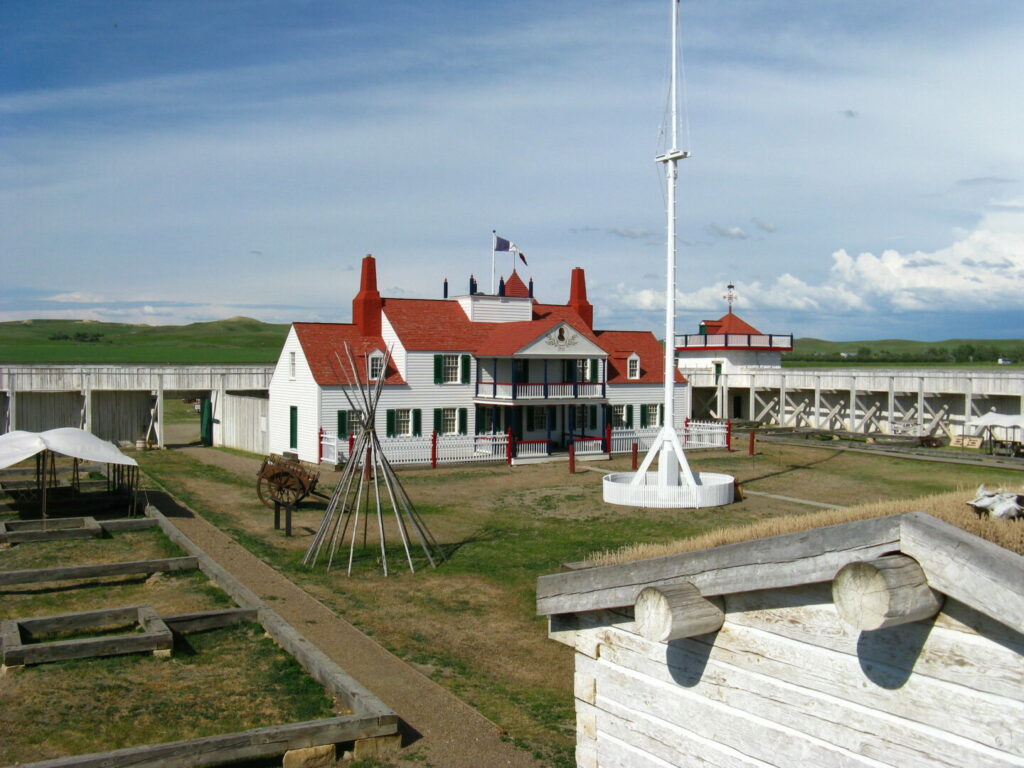
Knife River Indian Villages National Historic Site
The Northern Plains Indians made this land their home until the 1750s when fur traders came in and took over. When you arrive, watch the orientation film about Buffalo Bird Woman.
Explore the museum and learn about the Hidatsa people. Outside you can visit a reconstructed Earthlodge, Hidatsa garden, and village sites. There are three hiking trails of varying lengths.
The Village Trail is a little over a mile, the North Forest Trail is a little over two miles, and the Two Rivers Trail is a little over six miles. Along the trails, you’ll encounter various Native American village sites.
The Knife River Indian Villages National Historic Site is a location you can visit in a few hours or all day.
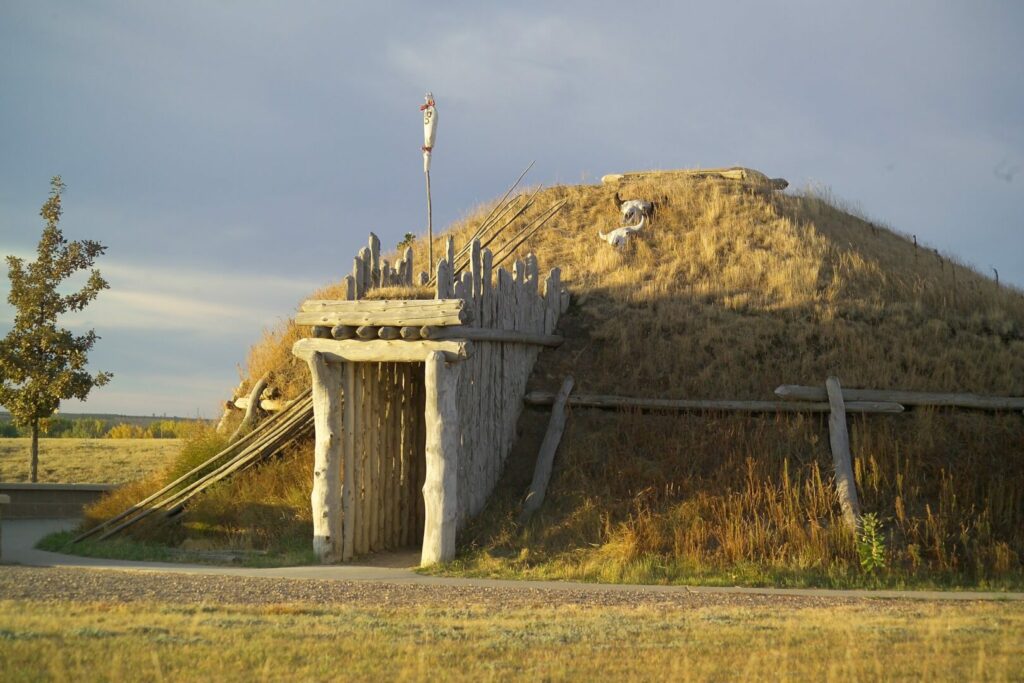
Lewis and Clark National Historic Trail
Spanning sixteen states and 4,900 miles, the Lewis and Clark National Historic Trail follows these famous westward explorers’ routes in the early 1800s.
Within North Dakota, there are fifteen sites along the trail that include the Knife River Indian Villages National Historic Site, the Fort Union Trading Post National Historic Site, Fort Abraham Lincoln State Park, and the Three Affiliated Tribes Museum.
The Lewis and Clark Interpretive Center in Washburn shares the expedition’s story through North Dakota.
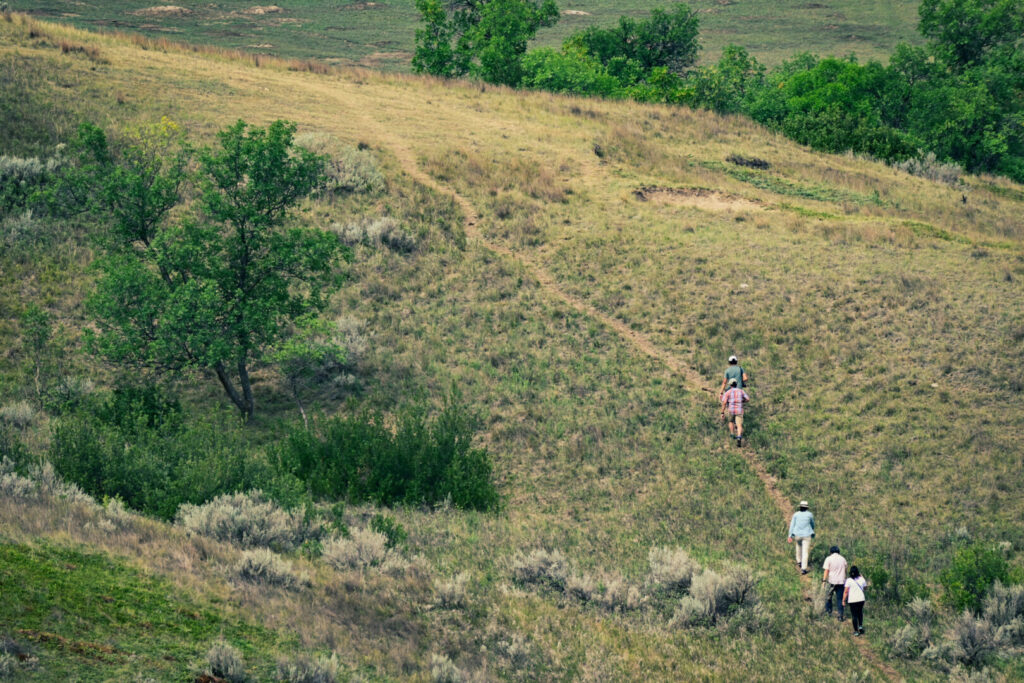
Don’t Miss North Dakota State Parks Either
It’s not just North Dakota National Parks that capture visitors’ attention. The North Dakota state parks are also quite famous.
The Fort Abraham Lincoln State Park along the Lewis and Clark National Historic Trail is the oldest North Dakota state park.
Another park visitors flock to is Turtle River State Park in Arvilla. It features 12 mountain biking, hiking, and interpretive trails. The park has 65 partial hookup campsites, and year-round recreational activities like picnicking, fishing, and sledding.
Icelandic State Park and Fort Ransom State Park are full of history. The Pioneer Heritage Center in Icelandic State Park hosts programming about North Dakota’s homesteading years.
Located in the Sheyenne River Valley, Fort Ransom State Park is home to the annual Sodbuster Days celebration. The celebration honors North Dakota’s homesteading years.
Keep in Mind: If you have the time, make a pit stop in South Dakota! Check out how to plan an RV trip to South Dakota for more tips.

Explore the Peace Garden State for Your Next Adventure
The Peace Garden State may be full of grasslands and wide-open spaces, but it’s on these grasslands where the Native American peoples lived for thousands of years before the American westward expansion.
North Dakota’s National Parks captures the history and culture of these people and the wildlife and beauty of the state. So the next time you’re driving along Interstate 94, plan to visit these National Park sites. There’s so much to learn!
What will be your first stop?




